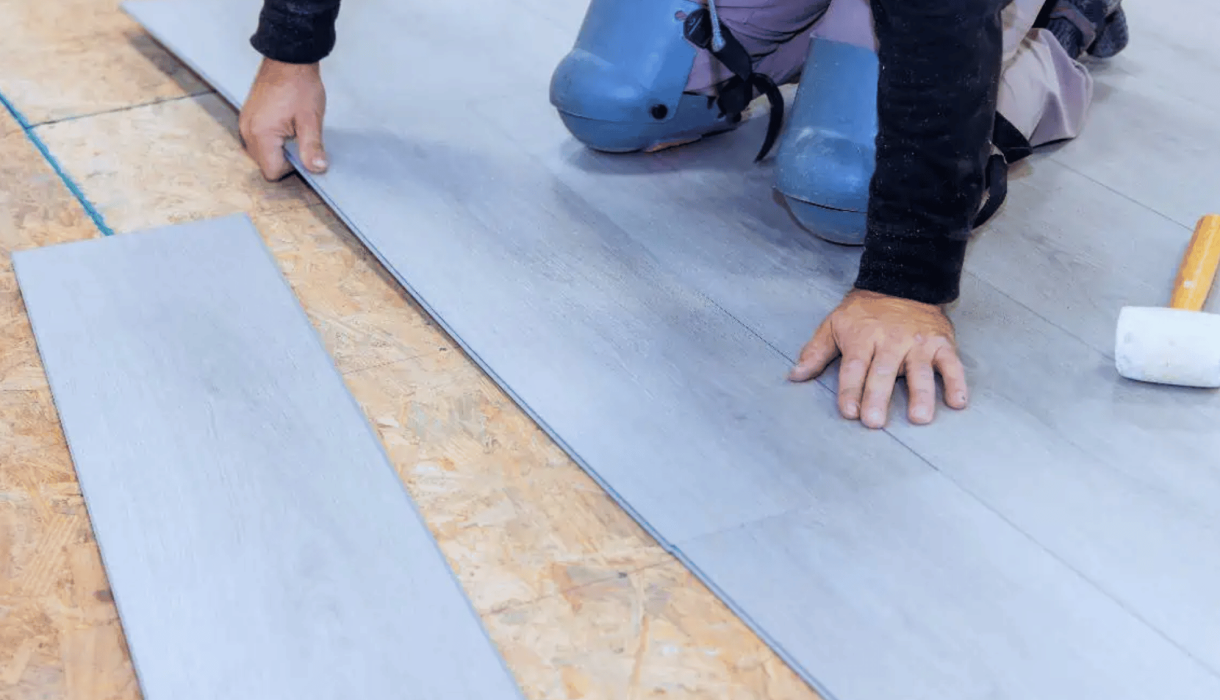When planning to install new vinyl flooring in your home, one question often comes up: do you need underlay for vinyl flooring? The short answer might surprise you. Unlike most other flooring types, vinyl often doesn’t require an additional underlay layer. However, there are important exceptions and considerations that could affect your specific situation.
At Abernethy Bespoke Flooring, we’ve helped countless customers make the right decisions about their flooring installations. Let’s dive into everything you need to know about vinyl flooring and underlay requirements.
Understanding Vinyl Flooring Basics
Vinyl flooring has undergone remarkable transformations over recent decades. Gone are the days of thin, flimsy vinyl sheets that offered little comfort or insulation. Modern vinyl products boast impressive technical specifications and comfort levels that were once unimaginable.
Modern Vinyl Flooring Technology
Today’s vinyl flooring comes in two main forms: sheet vinyl (sometimes called linoleum or lino) and luxury vinyl tiles (LVT). Both options have seen significant improvements in design, durability, and underlying structure.
Modern vinyl flooring typically includes multiple layers:
- A wear layer that protects against scratches and stains
- A design layer that gives the vinyl its appearance
- A core layer that provides stability
- A backing layer that often includes built-in cushioning
This multi-layer construction is key to why many vinyl flooring products don’t need additional underlay. The backing layer essentially serves the purpose that separate underlay would provide for other flooring types.
Our LVT Floor Fitters can show you the remarkable quality of modern vinyl products during an in-home consultation.
Sheet Vinyl vs Luxury Vinyl Tiles (LVT)
While both are vinyl products, there are significant differences between sheet vinyl and LVT that affect underlay requirements.
Sheet Vinyl – The No Underlay Option
Traditional sheet vinyl typically doesn’t require underlay. Here’s why:
Built-in Cushioning: Most quality sheet vinyl comes with a cushioned backing layer that provides comfort, insulation, and sound absorption – the main benefits you’d normally get from underlay.
Direct Installation Benefits: Sheet vinyl is designed to be fitted directly onto a prepared subfloor. This simplified installation process is one reason many homeowners choose vinyl flooring for DIY projects.
Moisture Resistance: Unlike wood or laminate flooring, vinyl isn’t easily damaged by moisture. This means it doesn’t need the moisture barrier function that underlay often provides for other flooring types.
Our experienced Vinyl Floor Fitters can advise on the best sheet vinyl options for your specific needs.
Luxury Vinyl Tiles – A Different Approach
LVT often tells a different story when it comes to underlay requirements:
Floating vs. Glue-Down Installation: LVT can be installed as a “floating floor” (where pieces click together but aren’t attached to the subfloor) or as a glue-down floor. Floating LVT installations frequently benefit from underlay.
Specialised LVT Underlay: If your LVT doesn’t have sufficient built-in cushioning, specialised LVT underlay can improve comfort, sound insulation, and longevity.
Click-System Stability: For click-system LVT, underlay can help prevent movement and clicking noises when walked upon.
The right decision depends on your specific LVT product and installation method. Our team can provide tailored advice based on your chosen flooring.
Practical Considerations for Vinyl Flooring
While the general rule suggests vinyl doesn’t need underlay, several practical factors might influence your decision.
Subfloor Preparation
The condition of your subfloor plays a crucial role in determining whether underlay might be beneficial:
Surface Quality Requirements: Vinyl flooring requires an exceptionally smooth, clean and level subfloor. Any imperfections in the subfloor will eventually show through your vinyl flooring.
Subfloor Issues: If your subfloor has minor irregularities, a thin underlay might help create a smoother surface. However, significant problems like major unevenness should be addressed directly through proper Floor Preparation rather than attempting to mask them with underlay.
Existing Flooring: Sometimes vinyl can be installed over existing hard flooring. In these cases, a thin underlay might help smooth the transition and prevent the telegraphing of patterns from the existing floor.
A professional assessment of your subfloor condition can save you from costly mistakes. Our floor prepping service ensures your subfloor is perfectly prepared for your new vinyl flooring.
Performance Characteristics
Different spaces have different requirements, which might influence your underlay decision:
Thermal Properties: While vinyl isn’t as cold underfoot as tile, adding thermal underlay in rooms like conservatories or basements can make a noticeable difference to comfort in winter months.
Sound Reduction: In flats or upper floors, acoustic underlay can help reduce impact sound transmission to rooms below. This is particularly important if you’re installing in a property with specific noise regulations.
High-Traffic Areas: Spaces with heavy foot traffic might benefit from underlay to extend the lifespan of your flooring and maintain its appearance longer.
When to Consider Underlay for Vinyl Flooring
Despite the general rule, there are specific situations where underlay makes sense even with vinyl flooring.
Specialized Installation Scenarios
Uneven Subfloors: If your subfloor has minor imperfections that would be expensive to fully correct, a thin underlay can sometimes help bridge small gaps or inconsistencies.
Cold Concrete Subfloors: Vinyl installed directly onto concrete in ground-floor rooms can feel quite cold. Thermal underlay can improve comfort significantly.
Noise-Sensitive Environments: For upper floors or flats, acoustic underlay can reduce footfall noise transmission to rooms below.
Pattern-Rich Designs: Complex patterns like Herringbone Flooring sometimes benefit from perfect subfloor preparation or thin underlay to ensure the pattern looks flawless.
Cost-Benefit Analysis
When deciding whether to add underlay to your vinyl flooring project, consider:
Initial Investment vs. Long-term Value: Quality underlay adds to your initial costs but might extend the life of your flooring and improve daily comfort.
Space-Specific Requirements: Different rooms have different needs. A kitchen might prioritize water resistance (where vinyl alone excels), while a bedroom might value sound absorption and comfort (where underlay helps).
Property Type Considerations: If you’re in a flat with specific sound insulation requirements, the cost of acoustic underlay is justified. For ground floor installations, thermal properties might be more important.
Installation Complexity: Adding underlay increases installation time and complexity. For DIY installations, this might be a consideration. Professional installers can efficiently handle underlay installation.
Making Your Final Decision
The decision about whether you need underlay for your vinyl flooring installation depends on several factors:
- The specific type of vinyl flooring you’ve chosen
- Your subfloor condition and material
- Room-specific requirements
- Budget considerations
- Personal preferences regarding comfort and sound
For completely confident decision-making, consulting with flooring professionals is always worthwhile. We’re happy to provide advice specific to your home and chosen flooring.
Conclusion
While vinyl flooring generally doesn’t require underlay thanks to its built-in cushioning and technical properties, there are situations where underlay makes sense. These include addressing minor subfloor issues, improving thermal insulation, reducing noise, or enhancing comfort.
The best approach is always to assess your specific situation rather than following a one-size-fits-all rule. Our professional fitters can provide tailored advice based on your home, flooring choice, and specific needs.
Have questions about your vinyl flooring installation? Contact Abernethy Bespoke Flooring at 07495 424721 or email us at michaelabernethy@live.co.uk for expert advice on your flooring project.


